
Panoramic view of Alto Nieva Reserve
Woah! They got it on a feeder!!! That was my reaction when I saw a photo of a male Royal Sunangel on a bird feeder. This is really rewarding news for Carlos Calle and Ciro Joel Alegria, who started “Fundo Alto Nieva”, a small reserve in the core of Abra Patricia; one of loveliest parts of the Peruvian Andes. Abra Patricia is one of Birdlife International’s Important Bird Areas for many reasons. Here birds are of an impressive variety: some are endemic, threatened or endangered, rare, and highly localized.
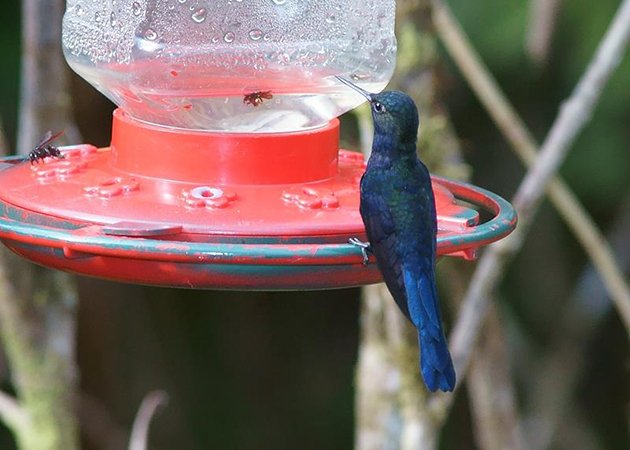 A male Royal Sunangel at Alto Nieva Reserve. This is the only place this bird is known to visit feeders.
A male Royal Sunangel at Alto Nieva Reserve. This is the only place this bird is known to visit feeders.
I visited the reserve back when Carlos and Ciro just started to put up the feeders, and Greenish Pufflegs and Bronzy Incas were the only visitors. The list of hummers visiting the feeders grows continually, and the Sunangel is indeed a celebrity among hummingbirds in the region. As you might have noticed, not all are called hummingbirds. Hummers have a great variety of names: such as emeralds, woodstars, mangos, woodnymphs, fairies, brilliants, topaz, and sunbeam among others.
 A better photo of the Royal Sunangel.
A better photo of the Royal Sunangel.
Hummingbird feeders keep growing in popularity, and what a welcome trend it is. If you have birded tropical forests, you might per chance run into hummingbirds backlit up in the canopy, or only get a glimpse at a hovering bird, or two hummers streaking through as they chase each other. You know they are hummingbirds and often they will go on your field notes as “small hummer with straight bill” or “medium sized hummer with forked tail” and so on.
Continuing with the blue theme, White-collared Jays are frequently seen at Alto Nieva Reserve. Photo: Carlos Calle
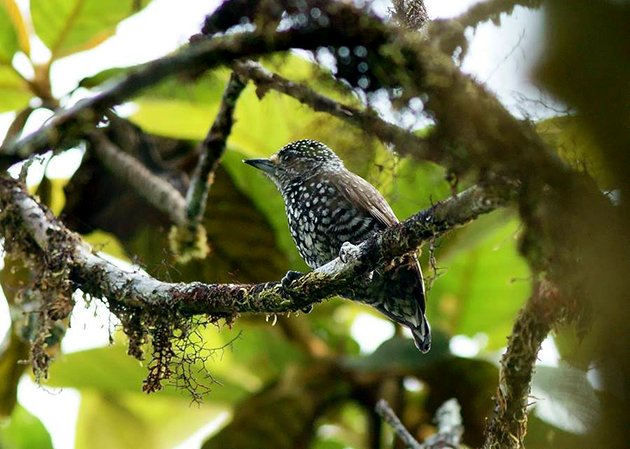 The Peruvian endemic Speckle-chested Piculet is found in the area following mixed species flocks. Photo: Carlos Calle.
The Peruvian endemic Speckle-chested Piculet is found in the area following mixed species flocks. Photo: Carlos Calle.
With many lodges setting up hummingbird feeders, one can spend hours watching and photographing them. However, it is easier said than done. You will have more time and chances to appreciate their iridescent colors as they turn their throats; and some birds even allow a very close approach. However, it can be overwhelming at times as they flit back and forth, hover very close to you, fly fast, and then perch inside bushes around the feeders, making it difficult to snag a good photograph.
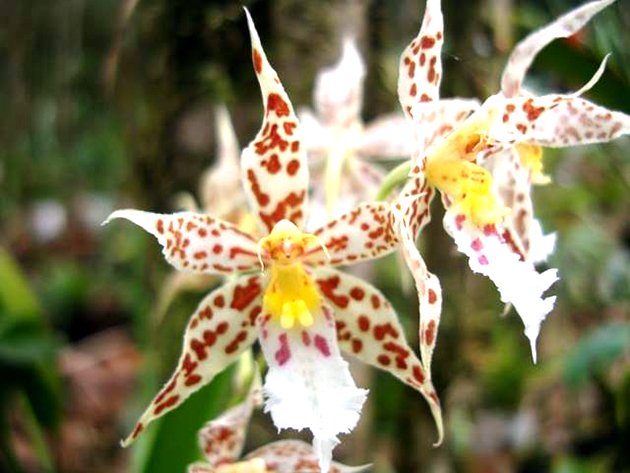 As with the feeders, the number of native orchids kept at the gardens continues to grow. Photo: Carlos Calle.
As with the feeders, the number of native orchids kept at the gardens continues to grow. Photo: Carlos Calle.
Some lodges attract up to 25 species, although about 10 species and some 70 individuals are present at certain times of the day. Feeders seem to attract more birds during the early morning hours and during the final half hour of light at the end of the day, when they feel the urge to fill their crops for the night. For some reason, wet afternoons after a rain makes hummers flock to the feeders.
Fundo Alto Nieva is not quite there yet when it comes to hummingbird numbers. There are only a handful of hummers visiting the feeders. Other feeders in the region, such as those maintained by ECOAN (Asociacion Ecosistemas Andinos) at the beautiful Long-whiskered Owlet Lodge and at the Huembo conservation area, attract a lot more species and a number of individuals. Huembo is where the Marvelous Spatuletail is reliable. Another place with lots of feeders and a barrage of hummingbirds is Waqanqi Orchid Garden in Moyobamaba, further down the east slope of the Andes.
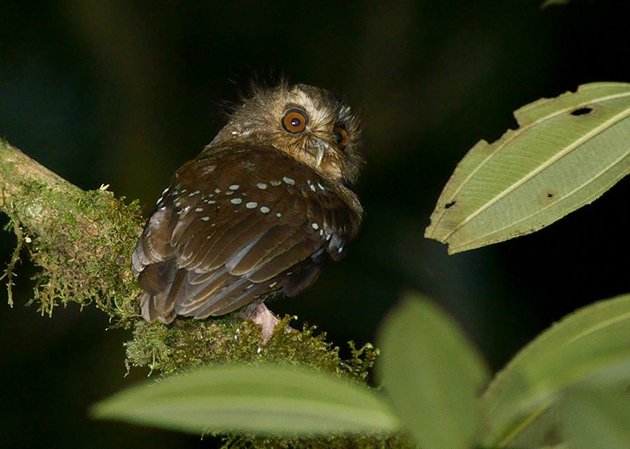 The Long-whiskered Owlet continues to be photographed in more places at the Abra Patricia Area. Photo: Carlos Calle
The Long-whiskered Owlet continues to be photographed in more places at the Abra Patricia Area. Photo: Carlos Calle
There are a lot of cool birds to see at Fundo Nieva and Abra Patricia. When birding slows down in the middle of the day, the orchid garden on-site offers lots of chances to practice your close ups photo skills.


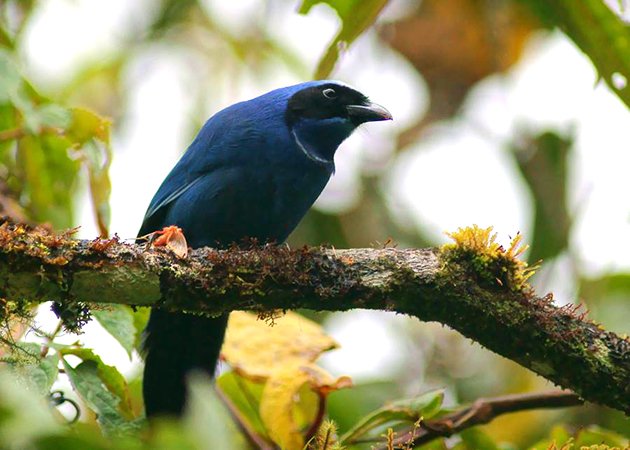











Hi Alfredo..I will like to get in touch with you and share wonderful new secret places for Birding! I explore sites in Ecuador and Peru often and soon will be on a special trip to a different site on the PACAYA SAMIRIA RESERVE…
Gisella
http://www.birdingwomen.com
I LOVE the photos!
Gisella, I look forward to hearing about new places!
Best Regards,
Thank you Erika.
Thanks for reporting on this reserve- looks fantastic and I plan on going there some day!
Pat, they would be happy to have you over!